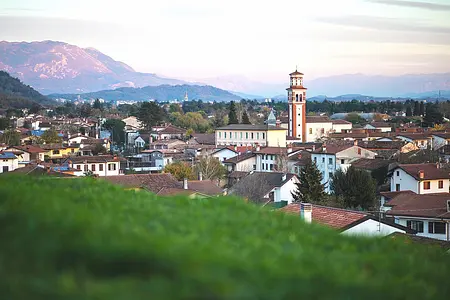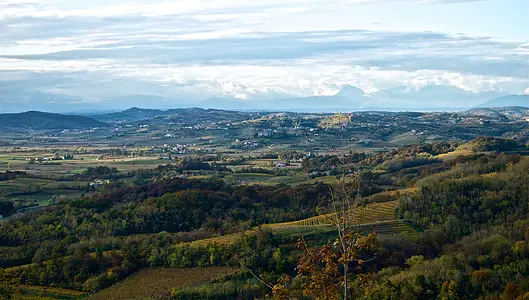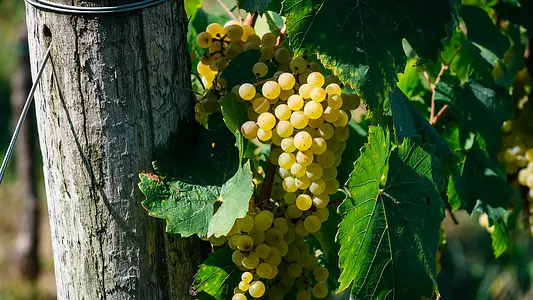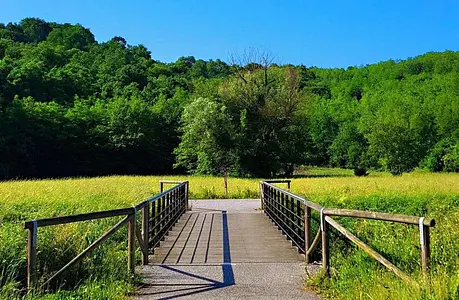SHARRYLAND


Mossa, in the heart of eastern Friuli - 3 DI 3
Mossa, the Preval and the places of the Spirit
A peace that knows no boundaries


Where is

The soul of Mossa
The sacred buildings of Mossa have a decidedly troubled history, characterized by the destruction wrought by wars and hard-earned reconstructions, carried out with tenacity, hope and cooperation. The most beautiful examples of this phenomenon are two, one located in the beautiful nature of Preval and the other in the bosom of the town, in the beating heart of town life. We are talking about the Shrine of St. Mary of the Peoples in Preval and the Archpriest's Church of St. Andrew, two places of worship profoundly different in their history and mission, but united by the same spirit of rebirth and a deep bond that has been created over time.
St. Mary of the Peoples
This is one of the few buildings one encounters in the enchanting Preval Valley: a small white sanctuary with a simple gabled façade, a few pilasters supporting the tympanum, and a crescent-shaped window giving light to the interior. The clean, straight lines stand out among the cheerful grass stalks and tree leaves dancing in the wind. Even the bell tower is but a small sail on the pinnacle of the façade, and it beckons to the worshippers of the surroundings, inside and outside the borders. It is precisely its mission of peace that inspires its name: Shrine of St. Mary Queen of the Peoples.
 The Shrine of the Preval
The Shrine of the PrevalThe result of numerous reconstructions, it is difficult to read its history through the remaining structures, but there is some evidence of it inside. Most of what we see has been restored in relatively recent times, but some elements jump out at us because they present themselves as an anomaly, almost a discordant note in the regularity of the whole. In the presbytery, in fact, the white plaster covering the walls gives way in some sections to stone and mortar masonry, visibly older than the surrounding masonry. This was a choice made during the latest restoration work, when it was decided to leave at least a space for the few remains of the sanctuary spared by wars and calamities. In short, these stones are survivors, and as such they deserve our admiration.
The archpriest's church of St. Andrew
In the heart of Mossa, however, is a beautiful Aurisina stone and brick building built between the two world wars and endowed with certain features that make it unmistakable. It is the church of St. Andrew. When one arrives in front of it, one immediately notices the gable of the facade, moved by soft waves that accompany the gaze to its apex with a rococo-inspired trend, but the entrance portal also wants its share of attention: a magnificent wooden doorway decorated with sinuous lines that recreate symbolic elements of Christianity, ears of wheat and grape shoots, all inscribed in a round stone arch with a marked splay, almost a hymn to the Romanesque style. The surprise is revealed when we focus on the outermost band of the arch, where the supraportal is located. This is an element executed in openwork that creates a kind of decorative frieze all around the archway, made of soft curves and sequences of beads that recall the elements of nature as told in the Art Nouveau style. Rococo, Romanesque, Art Nou veau... quite a mixture, no doubt about it, but skillfully dosed by the hands of its creator, architect Barich, who was entrusted with the building's design.
 Portal detail
Portal detailThe interior once again changes its style of reference, approaching rather neo-Baroque: the environment consists of a single nave, marked by the alternation of pilasters, chapels and compartments that lead the eye to the high altar. The prevailing hues are in shades of white, pink and cream, brightened here and there by the brighter colors used in the frescoes, mainly those of the central vault, which tell three episodes from the life of St. Andrew, and those of the Presbytery. Along the walls then, there is a projecting cornice that ideally separates them from the vault. Immediately below the cornice runs a plaster frieze that echoes the decoration of the sopraportal, softening the separation between interior and exterior.
A treasure chest of art
Not only the old sacred building: the ancient furnishings and decorations were also lost, and had to be replaced with works made during the 1900s. In St. Andrew's, however, there are some elements recovered here and there, which have much, much history behind them. The altarpiece, for example, immediately catches the eye. Of course, as in any sacred building, it is the architecture itself that draws attention to the altar, but here there is some other element at work. The altarpiece depicts the Martyrdom of St. Andrew with well-turned anatomies of Michelangelo's heritage, intense colors and a violent light capable of ripping through the clouds of the background and sculpting the painting's volumes. This is a Mannerist approach, and no, it is not an imitation, but an original painting from 1587 by the Tuscan artist Durante Alberti. The movements of this work over the centuries are not well known, but it seems that the original commissioner was from Bologna, and that it was in Bologna, in the late 1920s, that it was noticed by Baron Antonio Codelli of Mossa, and pointed out to the then parish priest as a possible acquisition for the new church.
 Statue of Our Lady of Preval
Statue of Our Lady of PrevalLess articulated is the history of the two altars kept in the two chapels located at the height of the holy arch: made of polychrome marble, they are dated to the early 1700s and came all the way from the sanctuary of Preval, which after damage during the Great War had to wait many years to finally return to welcome the faithful. The same fate of the altars was shared by what was the sanctuary's greatest treasure: the statue of the Madonna and Child. Made by an unknown artist from a block of linden wood, for centuries this enthroned Madonna has aroused the love and devotion not only of the citizens of Mossa, but also of the inhabitants of neighboring towns and even those beyond national borders.
Our Lady is precisely credited with the first construction of the Preval shrine. In fact, a farmer is said to have found an image of her among the grass, and no matter how many times they took it to the nearest parish church, the image returned to its meadow at night, until the valley inhabitants were convinced and built a holy shrine there where it had been pointed out to them.
Enter the Map of Italy's Undiscovered Wonders and find treasures where you least expect it... Inspire, Recommend, Share...
Contact
Collections
The Map thanks:
Enter the Map of Italy's Undiscovered Wonders and find treasures where you least expect it... Inspire, Recommend, Share...
Index

INTRODUZIONE
Mossa, in the heart of eastern Friuli

1 di 3
Move between nature and history

2 di 3
The intoxicating flavors of Mossa

3 di 3
Mossa, the Preval and the places of the Spirit
Where is

Contact
Collections

